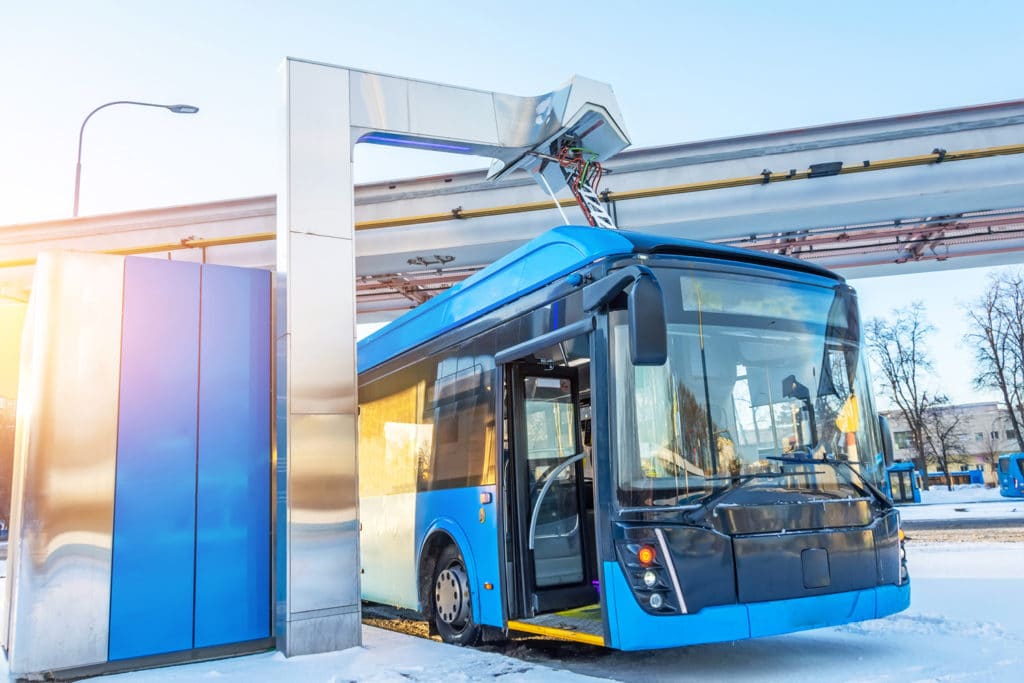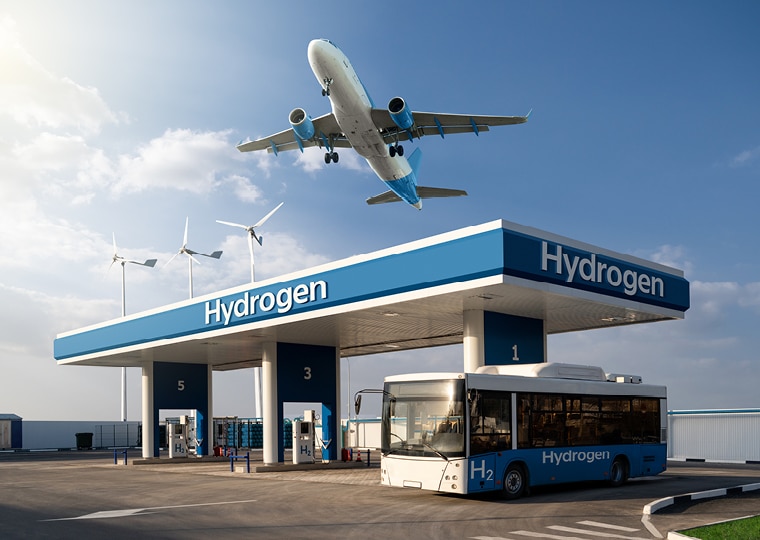As part of the global mission to address climate change, the transportation sector has emerged as a key lynchpin in reducing greenhouse emissions. The federal Environmental Protection Agency (EPA), has identified the nation’s transportation network as the single largest source of greenhouse emissions in the United States, and the need to invest in more zero emission technology within this sector is one of many strategies recently laid out by the White House to achieve net-zero greenhouse emissions by 2050.
The California Air Resources Board (CARB) recently mandated the transition to 100% zero emissions bus fleets by 2040. STV, and its team of bus transit vehicle and facility experts, is playing a key role in helping clients achieve their zero emissions goals.
Arguably the most significant effort thus far has been initiated by The Los Angeles County Metropolitan Transportation Authority (Metro), which oversees the third largest bus fleet in North America. LA Metro plans to transition its entire bus fleet and bus maintenance facilities from compressed natural gas to zero-emission technology. STV, in joint venture ZEBGO Partners, is providing a wide range of services to Metro to achieve these goals including:
- Assisting in the development of a Zero Emissions Master Plan;
- Evaluating existing infrastructure for integration needs and the recommended placement for in-route bus chargers, bus route and schedule analysis, life-cycle analysis for all emerging relevant technologies; and
- Investigating potential funding opportunities to support this plan.
Similarly, in San Diego, STV was contracted by the North County Transit District (NCTD), to provide planning support for a phased implementation to transition from diesel and compressed natural gas buses to battery electric and hydrogen fuel cell vehicles. The implementation includes modifications to NCTD’s facilities, as well as revising the existing bus site layouts and siting potential charging stations across various NCTD bus routes to charge the zero-emission vehicles while in service.

The STV team has created new tools to help clients with zero-emissions and climate change goals to identify potential green changes to existing bus infrastructure.
The PEER Tool
One of the biggest challenges transit operators face in the transition to zero-emission and electric buses is integrating charging stations without creating route delays, changes in efficacy, or needless costs. To address this challenge, STV developed a custom tool that allows our project teams to study bus route factors in a dynamic model. This tool, the Performance Evaluation of Electric bus Routes (PEER), simulates the number of stops, passengers, and schedules: everything a bus does on a given route.
“Transit agencies launching zero-emissions initiatives want to know how many in-route charging buses can be replaced immediately without impacting the schedule,” said Branden Tolle, STV engineering specialist. “For those that can’t be replaced on a one-to-one ratio, clients want to know how many new buses they’ll need. In the wake of the pandemic, fulfillment from manufacturers can take time and these clients want to hit the ground running.”
For any given bus, STV’s PEER energy consumption model factors in kilowatt-hour per mile, expected energy usage and state of charge status while in operation to generate data needed to decide how to configure charging infrastructure along each route.
PEER also accounts for financial changes and technological advances, such as battery charging technology that may occur over the multi-year process of fulfillment.
“The PEER tool is how we help clients plan for the future,” said David Casper, P.E., senior engineer.

Sustainable Batteries of the Future
The other moving target the STV team needs to account for to get to zero emissions is adapting to the fact that green technology is constantly changing and updating.
On some of its current contract wins, STV is analyzing existing routes, loads, climate, topographical conditions, ridership, and energy consumption to determine how existing routes can adapt to battery recharging technology, such as plug-in chargers or pantograph (in-route) chargers.
Clients have come to prioritize integrating battery electric buses into service because these vehicles provide lower operational and maintenance costs, while also meeting the state requirements for zero emissions and sustainability.
In 2018, only 300 battery electric buses were used throughout the country. But the “low or no emissions vehicle program” (or Low-No) recently indicated 52 projects across 41 states that will greatly expand that number. Echoing these growing needs, the Infrastructure Investment and Jobs Act has earmarked $174 billion for electric vehicles.
Additionally, some recent advancements in battery technology are expected to make them an even more cost-effective choice for operators.
“We expect to see at least a 5% increase in batteries’ energy density per year for the next decade, well in advance of the state’s sustainability goal,” said Michael Broe, senior engineering operations manager. “So, from the outset of each project, we establish charging stations with the capability to charge at a much higher threshold than current technology.”
Additionally, when developing a master fleet implementation plan, Broe and his colleagues account for “forward and backward capability” – using charging stations that are compatible with older technology, current standards, and the more compact and efficient models expected in the future.

Affecting Change at a Higher Level
Beyond the firm’s project work, STV’s team of thought leaders has also made a positive impact on clients via their industry stewardship. Casper and Broe currently serve as industry advisors to the Society of Automotive Engineers (SAE), a globally active association that, since 1904, has been responsible for developing standards and best practices since. SAE provides a forum for companies, government agencies, and research institutions to develop and devise best practices and technical standards for the design, construction, and implementation of motor vehicle components. It has proven to be instrumental in cases for the U.S. National Highway Traffic Safety Administration and its recommendations.
Last year, the organization helped establish a universal charging standard that reflected the need to utilize that forward and backward capability. In addition, SAE set the standard for induction compatibility so that operators won’t be beholden to a single manufacturer or require adapters.
“Older tech can still be utilized while we incorporate newer models,” Broe said. “As agencies implement more zero emissions standards, they’ll have more flexibility with their capital, and won’t be procuring components that become outdated. It will work for years to come.”
“The work that we’re doing now in California will continue to spread to other parts of the state and other agencies,” Broe added.
And as the nation continues to integrate zero emissions technology, Broe and SAE are already looking ahead.
“SAE may next look to set a standard for inductive (wireless) charging,” Broe said. “Which would allow for vehicles to charge while driving via magnetic fields built into the roadways.”
For more information about how STV’s leadership on zero-emission transformation, click here







